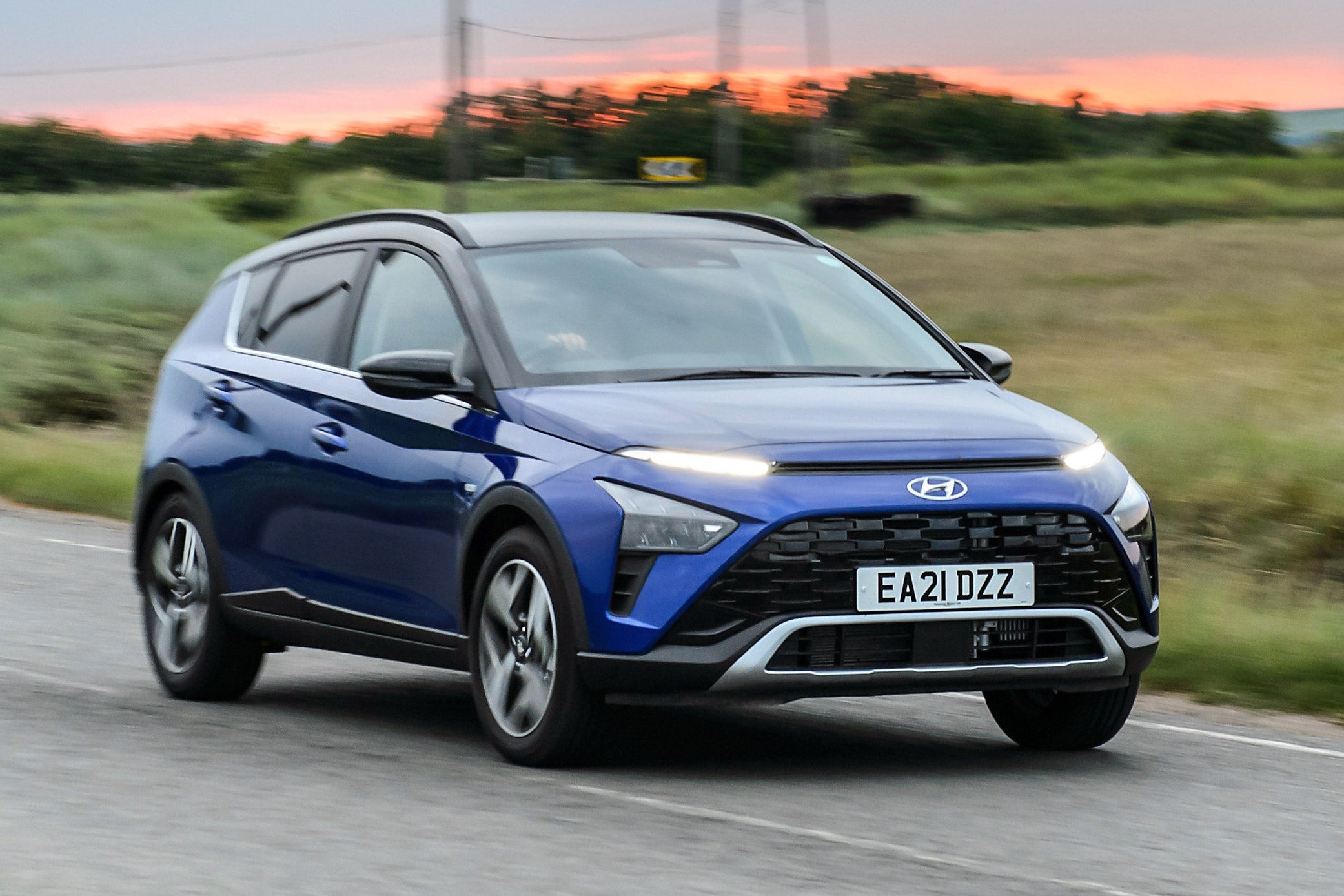Hyundai Bayon Review 2025: Price, specs & boot space
Written by Al Suttie
Quick overview
Pros
- Fancy digital dials as standard across the range
- Efficient petrol engines
- Excellent value for money
Cons
- There are more stylish small SUVs
- Limited engine line-up
- Not the most practical in its class
Verdict: Is the Hyundai Bayon a good car?
"The Hyundai Bayon is a no-nonsense small SUV. It's not the flashiest, sportiest or even the most spacious crossover on the market, but it does represent impressive value for money. It'll be cheap to run, too, thanks to its frugal engine."
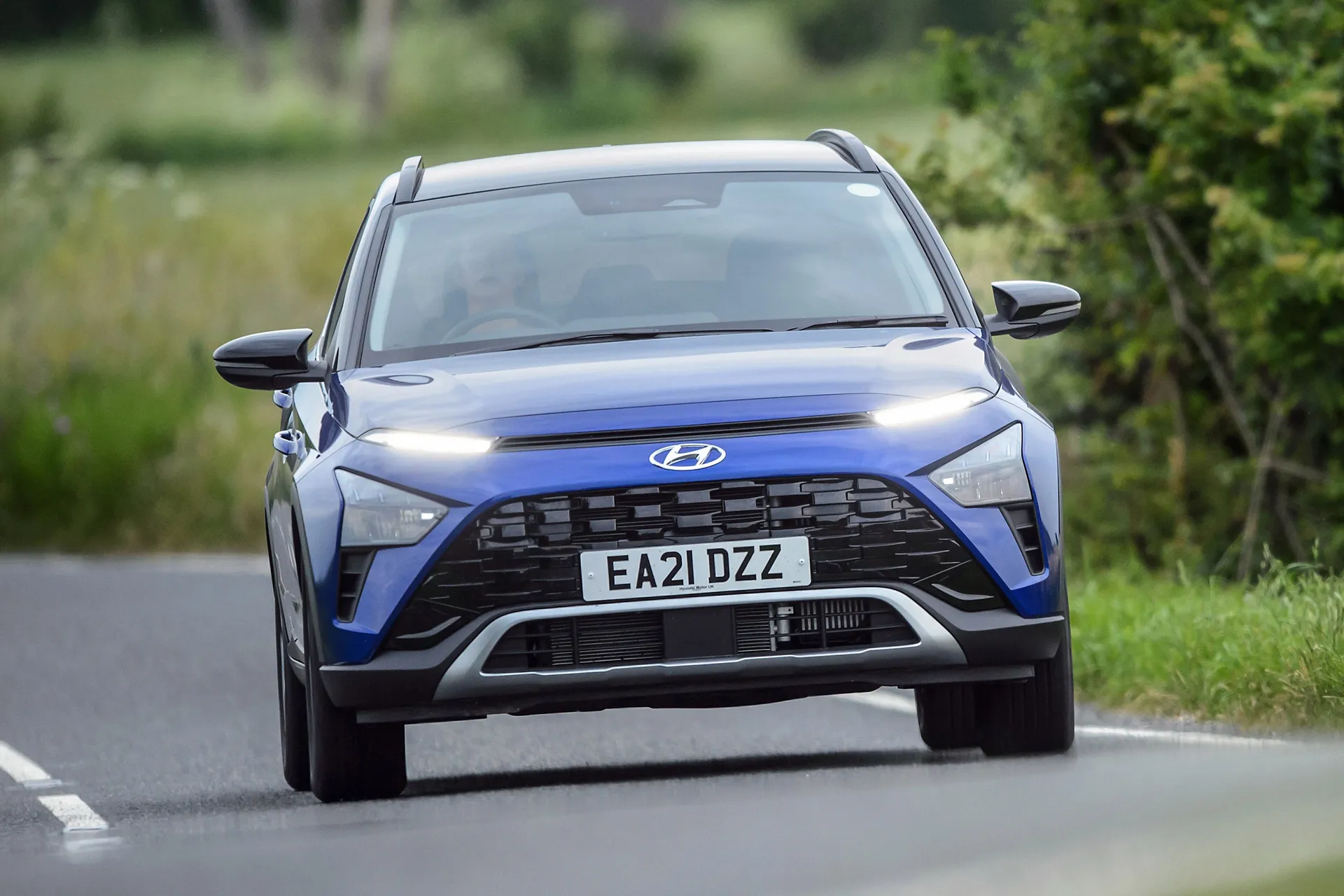
Essentially a slightly SUV-ified Hyundai i20, the little Bayon is smaller than the Kona and Tucson in the Korean brand's line-up. It's competing for much the same buyers as the Kona, though, as well as a long list of very good small SUVs including, to name a few, the Ford Puma, Skoda Kamiq, Volkswagen T-Cross, SEAT Arona, Peugeot 2008, Renault Captur, Nissan Juke, Toyota Yaris Cross... you get the idea.
So what's the Hyundai Bayon's unique selling point - the one thing that's going to tempt you into a Hyundai dealer when there are so many other excellent small SUVs on the market? Well, it looks pretty smart, while its starting price of a smidgen under £23,000 means it's fairly affordable as far as compact SUVs go.
The Bayon's interior is much like the Hyundai i20's. You don't even get a particularly high seating position, but all trim levels do come with an impressive digital instrument cluster rather than conventional dials. It's available with one of the best infotainment systems in the sector, too, in the form of a 10.25-inch central navigation system with Apple CarPlay and Android Auto and sat-nav as standard on all trims. Maybe that's the Bayon's USP.
There are just three trim levels available: Advance, Premium and Ultimate, with the Advance model replacing the SE Connect when the Bayon was facelifted in early 2024. It might have a low price tag, but even the most affordable Hyundai Bayon Advance isn't exactly sparsely equipped. You get things like Apple CarPlay and Android Auto, a reversing camera and 16-inch alloy wheels – and crucially the aforementioned 10.25-inch nav display that was not part of the SE Connect's kit list.
A mid-spec Hyundai Bayon Premium provides heated front seats and steering wheel, climate control, and 17-inch alloy wheels. The posh Hyundai Bayon Ultimate, meanwhile, comes with gloss black exterior highlights, sunroof, smart keyless entry, and a Bose sound system.
There isn't a great deal of engine choice in the Bayon. In fact, the biggest decision you'll need to make in this regard is whether you'd like your 1.0-litre petrol engine with 100PS with a six-speed manual or seven-speed dual-clutch automatic transmission, which comes down to personal preference.
It's an easy car to drive and the compact dimensions help around town (not to mention the standard-fit rear parking sensors and reversing camera). The Premium and Ultimate also have front parking sensors. It's comfortable on national speed limit roads, too – not as soft as a Citroen C3 Aircross, but not as firm as a Ford Puma.
We're not entirely sure the world needed the Hyundai Bayon, but it's a strong competitor in a crowded market and, in many ways, it's better than the pricier Hyundai Kona. You get a lot of standard equipment for your money, along with some impressive technology, and it'll be cheap to run.
Is the Hyundai Bayon right for you?
If you want a small SUV with lots of impressive technology (such as the standard-fit digital dials, slick infotainment and an array of driver-assist features), the Hyundai Bayon should be on your small SUV shortlist. It's not quite as practical as a Skoda Kamiq or as sporty as the Ford Puma, but it strikes a good balance and represents keen value for money.
What’s the best Hyundai Bayon model/engine to choose?
The engine choice is limited now with a new Hyundai Bayon to the 100PS 1.0-litre petrol engine. It's a chirpy three-cylinder motor that, like many of its rivals with a similar power unit, make decent progress while being cheap to fuel. The six-speed manual gearbox is fine for most drivers, or there's the option of a seven-speed dual-clutch auto.
In terms of trim level, the mid-spec Hyundai Bayon Premium offers a good compromise between desirable equipment and affordability. It comes with nice-to-have features like climate control, automatic wipers, front parking sensors, rear privacy glass, heated steering, and 17-inch alloy wheels.
What other cars are similar to the Hyundai Bayon?
If you're in the market for a small SUV, you might also want to consider the (very slightly) bigger Hyundai Kona, as well as the Kia Stonic. The Nissan Juke and Renault Captur are two very popular alternatives, while we also rate the Skoda Kamiq and Volkswagen T-Cross. The Ford Puma's a slightly more stylish choice, as is the Peugeot 2008, DS 3 Crossback and SEAT Arona. The Toyota Yaris Cross is an excellent small hybrid SUV, too.
Comfort and design: Hyundai Bayon interior
"The Hyundai Bayon's cabin looks much the same as you'll find in the Hyundai i20. You get a sleek dashboard with a widescreen infotainment display perched on top, some snazzy finishes and plenty of lines in all directions to add some character."
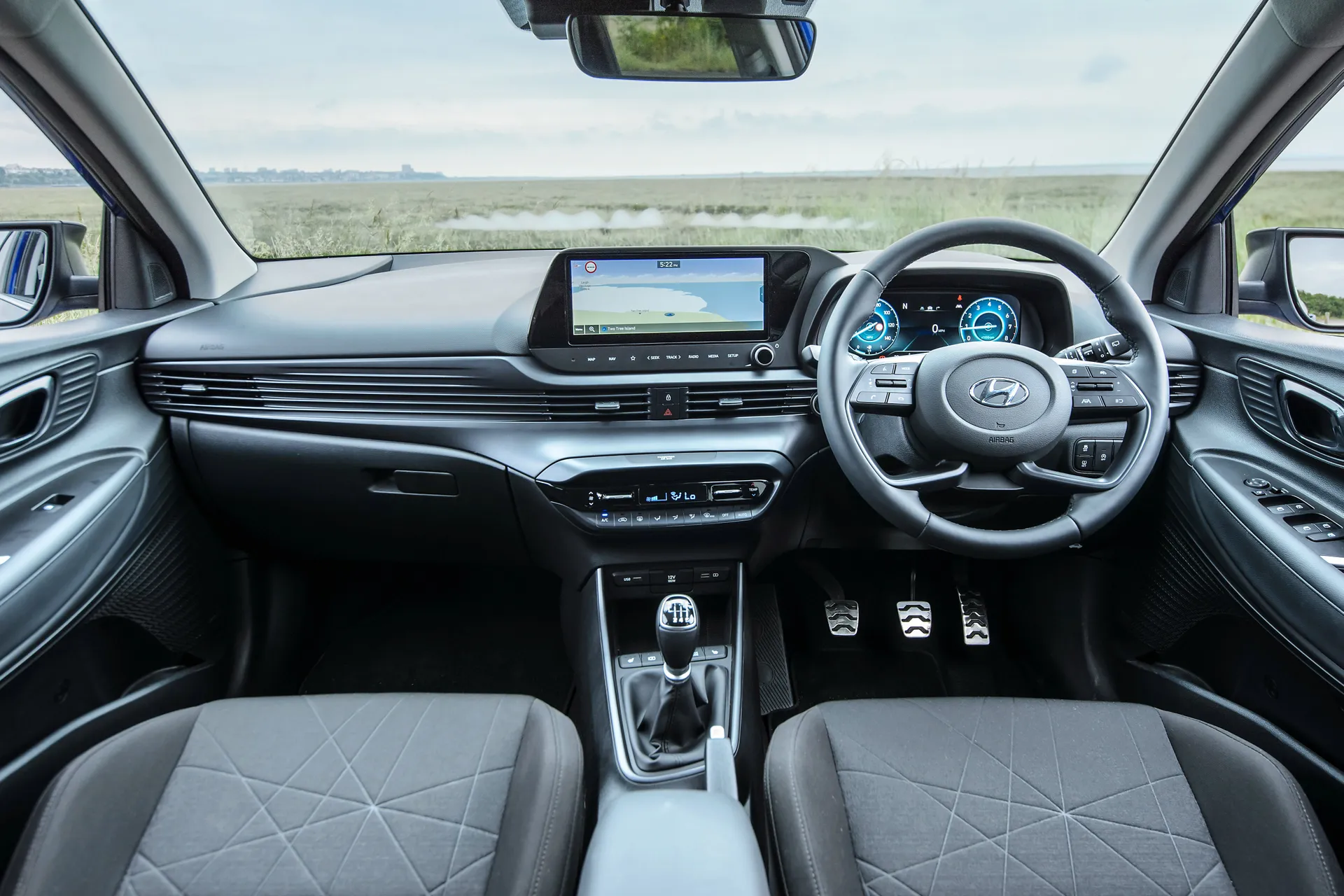
The Bayon's a comfortable car but it's worth noting that you hardly sit any higher in it than you do in the i20. People buy small SUVs like this for a raised seating position but they don't always deliver. If that's what you're after, take a look at the slightly bigger Volkswagen T-Roc instead.
One of the most impressive features of the Hyundai Bayon's interior is its 10.25-inch digital instrument cluster. This is standard across the range, so even the most affordable Bayon Advance. formerly the SE Connect, trim level doesn't come with conventional analogue dials. It looks really sharp and lifts the cabin from being a bit drab to borderline impressive.
Low down on the centre console, Bayon Premium and Ultimate models get a climate control system that can be operated via toggle buttons. It might look a bit old fashioned but it's much more user-friendly than touch-sensitive buttons or, even worse, the climate control being lumped into the infotainment system.
Quality and finish
Perceived quality is so-so. We doubt the Bayon's interior will fall apart within a few years, but would it have hurt Hyundai to fit a few more soft-touch finishes? There are quite a few hard slabs of plastic dotted around the cabin.
It's not all bad news, though. You do at least get a leather-wrapped steering wheel and gear knob as standard across the range, and it's fair to say even the entry-level Hyundai Bayon Advance could hardly be described as downmarket.
Infotainment: Touchscreen, USB, nav and stereo in the Hyundai Bayon
All Hyundai Bayon models come with an impressive 10.25-inch touchscreen with navigation system. This is one of the best in the class, with sharp graphics and logical menu layouts. Apple CarPlay and Android Auto are standard, too, so you can access your Spotify playlists when you're sitting in traffic. The previous SE Connect trim made do with an eight-inch central touchscreen display, so it's probably worth looking for a Premium or Ultimate model if you're buying used.
The Hyundai Bayon Ultimate also come with a wireless phone charging pad, which is a nice-to-have feature, as is its classy Bose sound system.
Space and practicality: Hyundai Bayon boot space
The Hyundai Bayon measures 4180mm long and 2023mm wide, while it's 1490mm tall. That means it's one of the smaller small SUVs, if that makes sense, sitting beneath the likes of the Hyundai Kona, Skoda Kamiq and Renault Captur in size.
It doesn't feel cramped inside, though. Sure, a family might be better looking at a Hyundai Tucson instead, but the Bayon is more versatile than the i20 hatchback. There's loads of headroom, while it's wide enough to ensure those in the front aren't awkwardly bashing elbows. You get plenty of interior storage, too, including a generous glovebox and fairly big door bins.
You can squeeze three into the back of a Bayon if you really must, while there are Isofix child seat mounting points fitted to the outer rear seats. Adults will find their knees touching the front seats, while there's no sliding rear bench like you'd get in a Volkswagen T-Cross.
In terms of boot space, the Hyundai Bayon can take 411-litres of luggage, which is decent for this class, or 1205-litres with the rear seats folded down. If you need a bigger boot, we'd recommend a Skoda Kamiq.
Handling and ride quality: What is the Hyundai Bayon like to drive?
"The Hyundai Bayon slots nicely between the Citroen C3 Aircross and Ford Puma in the handling stakes – meaning it strikes the right balance of comfort and agility."
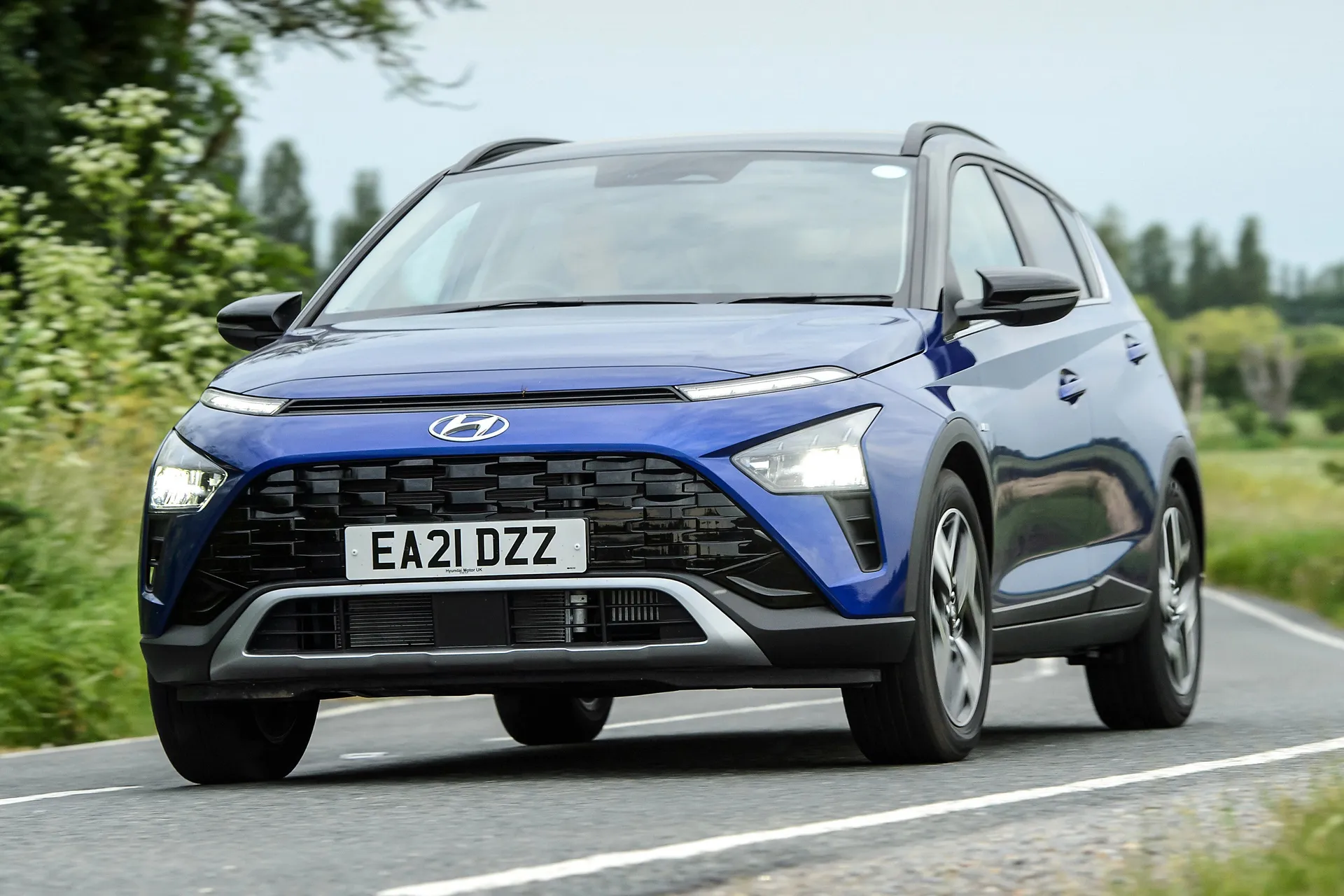
It drives just like a slightly higher riding Hyundai i20, really, with light yet precise steering and a plethora of tech on hand to keep you on the straight and narrow.
Selecting sport mode on the centre console adds a bit of weight to the steering but it's otherwise a bit pointless. If you want a small SUV that's fun to drive, you'd be much better looking at the Ford Puma instead.
Ride quality is pretty good, coping well with bumpy road surfaces. It helps that you can't buy the Hyundai Bayon with anything bigger than 17-inch alloy wheels, while the entry-level Bayon Advance, or the previous SE Connect, comes with 16-inch alloy wheels. Generally, the smaller the wheel the bigger the tyre, and that provides a squishier ride quality. It's certainly the case here.
What engines and gearboxes are available in the Hyundai Bayon?
The Hyundai Bayon is offered with a 1.0-litre petrol engine with 100PS and a choice of six-speed manual or seven-speed dual-clutch automatic transmissions. Neither will blow your socks off with their performance as the manual needs 11.3 seconds to deal with 0-62mph, while the auto is a little more leisurely at 12.4 seconds for the same dash.
Previously. Hyundai offered the Bayon with a mild-hybrid engine available with a choice of two power outputs (100PS or 120PS) along with a six-speed manual or seven-speed dual-clutch automatic gearbox.
Don't get too excited about the word 'hybrid' – this isn't a proper ('self-charging') hybrid, rather a 48-volt system which uses a degree of electrical assistance to help out the petrol engine. As such, the car can't travel under electric power alone (aside from, perhaps, as you coast to a stop). It ought to be very efficient, though, and the mild-hybrid setup provides a small boost in performance.
For used buyers, either is a decent choice, while new Bayon buyers will find the 1.0-litre petrol engine is on a par with most rivals for the way it shifts through the gears in town or on the open road. As a result, it's acceptably peppy at lower speeds and offers enough pull on the motorway for comfortable cruising.
Refinement and noise levels
Despite only having a little 1.0-litre petrol engine, the Hyundai Bayon's motor isn't as burbly as you'll find in alternatives like the Citroen C3 Aircross.
The mild-hybrid setup in older models is unobtrusive, too, while wind and road noise are relatively well hushed in all Bayons. It certainly seems calmer inside than the sportier Ford Puma.
Safety equipment: How safe is the Hyundai Bayon?
The Hyundai Bayon failed to achieve the full five-star Euro NCAP rating when it was crash-tested in 2021. That doesn't mean it's fundamentally an unsafe car, though – it was awarded four stars out of five, with NCAP's criticisms including poor pedestrian protection and marginal protection of the driver's chest in a crash.
Standard safety kit includes an autonomous emergency braking system which can detect pedestrians and cyclists, while Ultimate models get a blind spot collision warning system.
Hyundai now equips all Bayons with lane follow assist, which'll keep you central in your lane on the motorway. This was only fitted to the Ultimate trim prior to the Bayon's update in 2024.
MPG and fuel costs: What does a Hyundai Bayon cost to run?
"The Hyundai Bayon offers an official fuel economy of 51.4mpg, which is decent but not outstanding for this type of SUV."
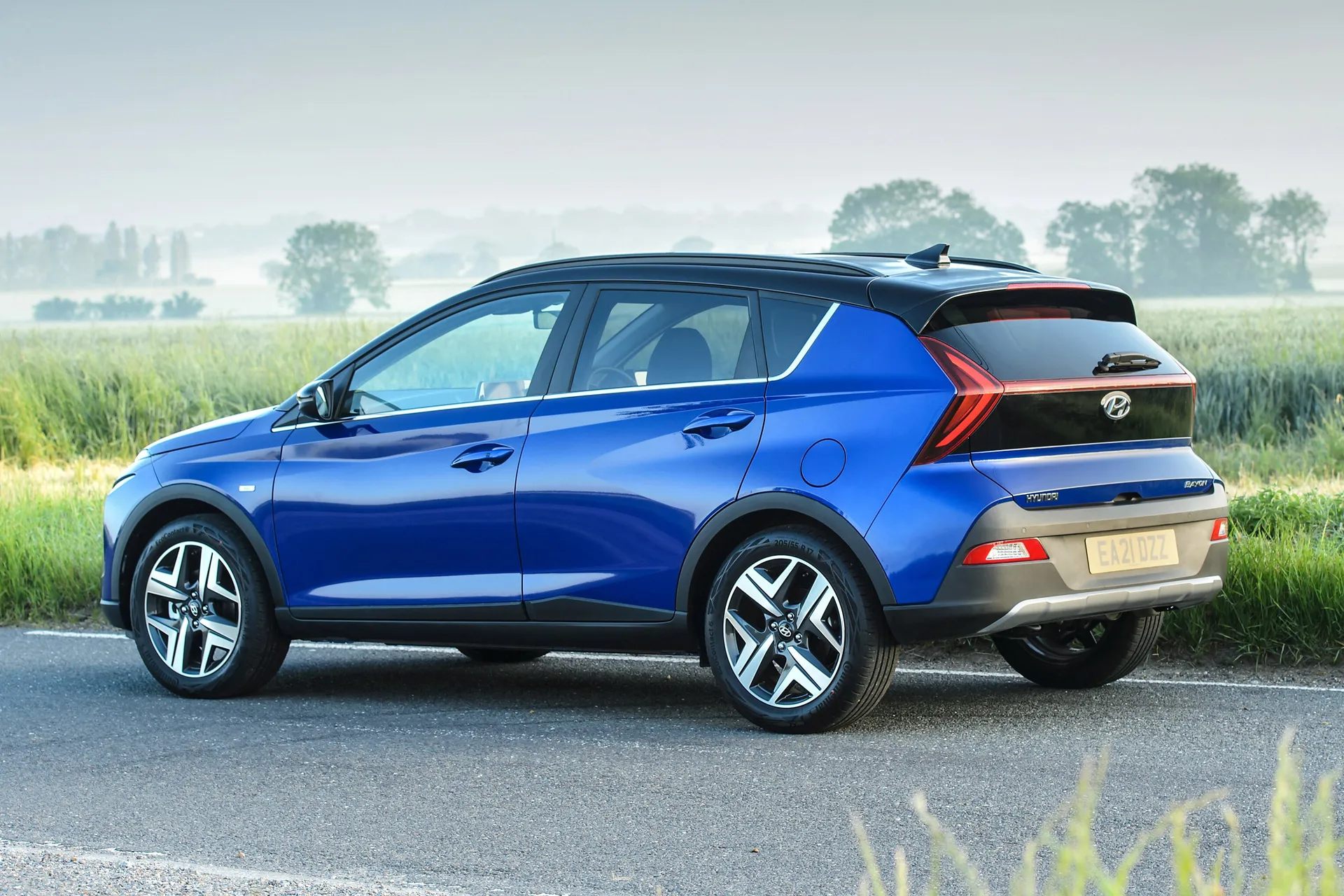
That's according to WLTP figures which are designed to be fairly representative of the real world but, obviously, the actual fuel economy you'll see will depend a lot on the kind of driving you cover. The Bayon does slip to an officially rated 50.4mpg of you choose the 1.0-litre manual version in top-spec Ultimate trim, however.
With a 40-litre fuel tank, you'll pay around £60 to fully fuel the Bayon, and (by our admittedly very unscientific calculations) you can expect to get around 400 miles between top-ups.
Mild-hybrid tech in the earlier Bayon before it was facelifted in 2024 brings a useful boost in claimed fuel economy. Officially, it'll return up to 53.3mpg no matter which engine you go for.
If you're looking for something a little more efficient, the Toyota Yaris Cross returns up to 64.1mpg. The plug-in hybrid Renault Captur E-Tech, meanwhile, can travel up to 30 miles under electric power alone.
Hyundai Bayon reliability and warranty
While the Hyundai Bayon is too new for any scary reliability horror stories to emerge, the brand generally makes some exceptionally reliable cars. Indeed, Hyundai ranked seventh in the latest HonestJohn.co.uk Satisfaction Index, while we haven't heard of any common issues with cars such as the Hyundai i20 or Kona SUV. A five-year, unlimited-mileage warranty is a big selling point, too.
Hyundai Bayon insurance groups and costs
If you're buying a new Hyundai Bayon, all of the trims sit in group 15E for insurance (out of 50) if they have the automatic gearbox. Opt for the Bayon with the manual gearbox and that slips up one notch to group 16E for the Advance and Premium trims, while the Ultimate version tips into group 18E.
If you want a lower insurance rating, the pre-facelift Hyundai Bayon can be had with a group rating as low as 13, while the 120PS version goes up as high as group 18.
VED car tax: What is the annual road tax on a Hyundai Bayon?
For the first year of ownership, a Hyundai Bayon will cost you £440 for Vehicle Excise Duty, or road tax as most of us know it. This is because the Bayon's 1.0-litre engine emits between 124- and 126g/km of carbon dioxide emissions.
In subsequent years, that falls back to a more affordable £195 per year for road tax, which is what used Bayons will be charged.
Hyundai Bayon price
"A new Hyundai Bayon starts from just less than £23,000 in entry-level Advance trim, while a mid-spec Premium model will cost you upwards of £24,300. The top-spec Hyundai Bayon Ultimate starts from around £24,700, while opting for the automatic gearbox adds £1250 to the bill."
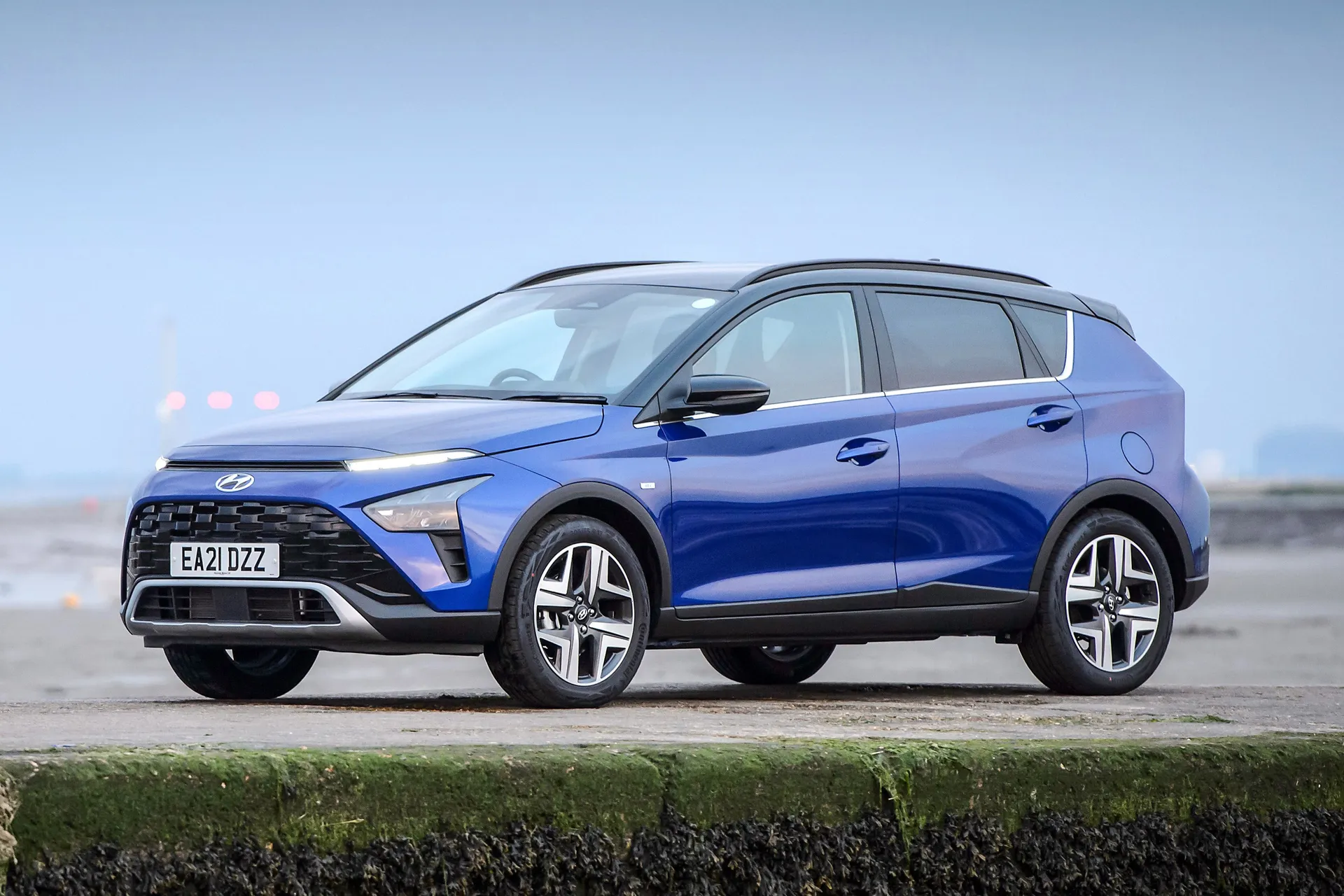
That means the Hyundai Bayon is at the budget end of the small SUV market, sitting beneath the Kona in the brand's line-up. It's pretty comprehensively equipped for the cash, too (see below for exact details), which makes the Bayon a bit of a rare new car bargain.
Of course, if you want to save even more cash, look for a nearly-new or pre-registered example. We've seen cars with delivery miles only on the clock being advertised for £1100 less than the list price.
A four-year old Bayon with around 35,000 miles to its name will cost you from around £11,000 depending on the trim you choose. That sum should get you a Premium model with the 100PS engine.
Trim levels and standard equipment
There are three Bayon trim levels available: Advance, Premium and Ultimate.
The most affordable is the Hyundai Bayon Advance, which was previously the SE Connect version up to the Bayon's faclift in 2024. Standard equipment on this entry-level car includes 16-inch alloy wheels, a leather-wrapped steering wheel and gear knob, a reversing camera and an 10.25-inch media system with DAB radio and Apple CarPlay/Android Auto. There's also the impressive 10.25-inch digital drivers display.
The mid-level Hyundai Bayon Premium includes 17-inch alloy wheels, heated front seats, a heated steering wheel and automatic climate control. The Bayon Premium also features front parking sensors, rain-sensing wipers, rear USB charge point, and rear privacy glass.
The top-spec Hyundai Premium Ultimate adds an electric sunroof, windscreen with accoustic film to reduce cabin noise, keyless entry and a Bose premium sound system. You also get a Blind Spot Collision Warning system included.
Ask the heycar experts: common questions
How much is the Hyundai Bayon?
Is the Hyundai Bayon bigger than the Hyundai Kona?
Is the Hyundai Bayon a hybrid?
Get our latest advice, news and offers
Keep me updated by email with the latest advice, news and offers from heycar.
By submitting you agree to our privacy policy
